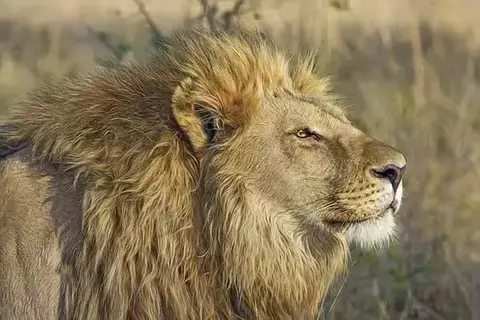Types Of Lemurs In Madagascar
Murphy ScottMadagascar is sometimes called Lemuria. Here you can find 99 species and subspecies of lemurs, of which 39 were discovered quite recently, between 2000 and 2008. Lemurs have round, often very large and glowing in the dark eyes, elongated muzzle, long but not clinging, as happens with monkeys, tail, short front legs (they jump on two hind legs). They have a piercing voice, similar to the crying of a capricious child. At night in the woods, there are loud “Lemuria concerts”. Lemurs live in flocks on trees, eating insects and fruits. In Madagascar and neighboring islands, the population considers lemurs to be sacred animals. There is a legend that once upon a time lemurs were humans, and then, living in the forest, they grew wool and turned into animals. When some careless lemur falls into a trap, a Malagasy man will surely release him and let him out, and if the lemur is wounded, he will heal him. When a peasant or hunter sees a lemur in the forest, he bows down and greets it as if he were a close relative. This family includes mouse lemur – the smallest representative of primates (12 – 13 cm long), lying (reaching a length of 100 – 115 cm), as well as Katta, Mongo, etc. These nimble, mobile animals live mainly on trees in family groups, feed on fruits, insects, and lead a nightlife. The other family, the Indri, consists of short-tailed Indri, mossy Indri, and chilled Indri. Also, there is a strange creature with very tenacious front extremities, the arm.
Aye-aye

Aye-aye – Daubentonia madagascariensis is the largest representative of the night primates. It has a brown color of white speckle and a large fluffy tail. The peculiarity of aye-aye that immediately catches the eye is the third finger on the front limbs. With this finger, the animal brushes the fur and uses it for drinking, extraction, and consumption of food. Experiments of scientists have shown that cuckolds, like bats, use echolocation when searching for food. The third finger of ai-ai captures sound waves that occur and spread in the thickness of the tree when it taps – so the beast tries to detect the larvae in the wood.
Cat lemur or ring-tailed lemur
 Image from lemur.duke.edu
Image from lemur.duke.eduCat lemur or ring-tailed lemur – Lemur catta is the most famous species from the lemur family. It is a symbol of the island of Madagascar. The tail of a cat lemur is the main pride of this animal. If the body of a lemur reaches about 40 cm in length, the tail – all 55 centimeters! The Madagascar name of the cat’s lemur is poppies.
The inhabitants of Madagascar attribute amazing abilities to lemurs. For example, they believe that these animals know the secrets of healing: family members collect medicinal herbs and put them on top of the wounds of a sick congener. It is also said that female lemurs, before giving birth, weave a cradle of twigs and hang it on a tree, pre-laying on the bottom of the stones so that the cradle is not blown away by the wind.
Few people in the world know how to love as much as cat lemurs. When a family couple is formed, the bond lasts a lifetime. If one lemur dies, the other falls into terrible melancholy: life loses all meaning for him.
Lemurs have very sensitive skin: on the surface of the palm, there is a scalloped relief – a special formation of hollows and hills, thanks to which lemurs can “see with their hands.
A pack of cat lemurs usually includes 12-25 individuals. The group is headed by a dominant female and a male. Females dominate the males, their position in the hierarchy is stable. Mothers often rest in groups, tidying themselves up on forest bedding. Children at this time play, crawling from one female to another. It happens that one long-suffering female hangs three or four offspring at once, while the other, leaning towards her, lovingly licks them out. But the males have to constantly confirm their right to dominate in fights. Each member of the pack knows its place in the social hierarchy. In its complex society, lemurs have developed a sophisticated language through which they constantly communicate with each other.
Males use the smell, which emits armpit glands as a weapon. Before the fight, the male rubs their wrists, passes the tail between their legs, presses it to the chest, and pulls it between the wrists, so that he is well soaked in these secretions.
Mouse lemur
 Image from nationalgeographic.com
Image from nationalgeographic.comThe smallest of Madagascan lemurs, our smallest relative is the mouse lemur, or the dwarf poppies Microcebus Mittermeier. It has a snub-nosed nose and large expressive eyes. The weight of these animals is 45-85 grams. Newborn babies are worn by the mother with her teeth grasping the skin on her side, and they never hang on it either from the bottom or on its back.
Indri and Sifaka
 Image from macroevolution.net
Image from macroevolution.netThe family of Indri lemurs is very interesting. It has four species. Indri is the largest living lemur. The length of his body together with his head is about a meter. Indri is a magnificent jumper: he pushes away, sharply straightening his hind limbs, and standing in the air, flying over and over again in high jumps, moving from tree to tree. The most curious thing is that usually in such jumps and flights the animals have a tail in motion. And Indri does not have a tail – a small branch, but it does not interfere with its “giant swing”.
A relative of Indri is a Sifaka lemur. It jumps so well that it even lost the ability to run on all fours. His hind legs are much longer than his front legs, and if he sometimes comes down to the ground, he jumps in an upright position, repulsing with both feet.
At sunrise, in the morning hours, Indri and Sifaka are gentle in the sun, with lemurs raising their hands to the sky to warm them well. This prayer posture served lemurs for a long time as a “security card”: no animal worshippers were hunted. But now superstitious fears have disappeared, and nothing protects lemurs. Neither the fact that they are our relatives nor the fact that they are an endangered species.
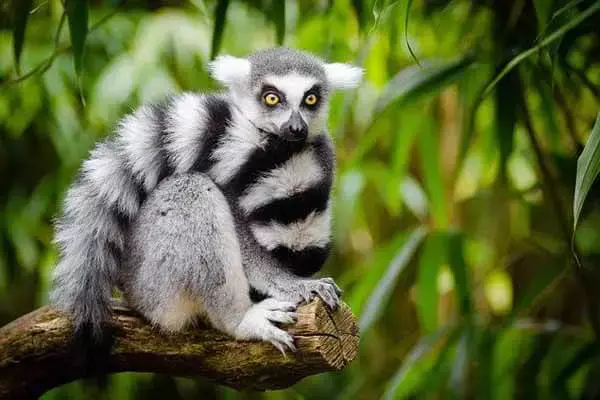
The types of lemurs in Madagascar are the most diverse group of primates in the world. They include the diurnal, mouse, and sportive species. The aye-aye is the largest species, weighing around 160 kilograms. Other types of lemurs are nocturnal, like the aye-aye, which can weigh anywhere from 45 to 85 kilograms.
There are many different types of lemurs in Madagascar, from the dwarf to the tiny mouse lemur. The small but colorful species is found in three national parks in Madagascar: Ranomafana National Park, Andasibe National Park, and Berenty Reserve. It is the smallest species of primates and only weighs 30 grams, but can grow to be more than 100mm long. This makes it a popular attraction for tourists.
The ring-tailed lemur is the most commonly seen species. It is recognized by its red-and-white ringtail and a meowing and purring sound similar to a cat. It is found in tropical forests in the south of Madagascar, where it is common to find it in national parks. The Isalo National Park is a popular place to see the Maki Catta, as are the Berenty Reserve and Zombitse-Vohibasia National Park. The ruffed lemur is the largest species and the ring-tailed lemur is the smallest.
The aye-aye lemur has a thick coat of white to black fur that is white to black. It is very social and will approach you for bananas. One of the most solitary types, the aye-aye lemur is nocturnal and lives in the deepest Malagasy forests. These animals are the most common species in Madagascar.
The Ruffed lemur is the largest of the two species. Its large white ringtail distinguishes it from the gypsy lemur. This species of lemurs also have a secondary tongue under its main tongue. This tongue is used to clean the tooth comb. Its size and color make them unique. Some of the more commonly seen types of lemurs in Madagascar are Aye-aye, ring-tailed lemur, and sloth.
There are several types of lemurs in Madagascar. Some are specialists in a particular food, while others eat a wide variety of fruits and leaves. While most lemurs are omnivorous, some are specialized in one type of food. It is possible to see two different types of lemurs in the same forest, but the two are not related. These differences can be devastating to a species’ survival.
The Masoala lemur is the largest of the two types of lemurs in Madagascar. They are the largest primates and are found only in the Masoala Peninsula. The Masoala is a small, dark-brown primate with a rusty red ruff. Its black stomach and tail are black. The tawny Lemur is the most endangered of the three types of lemurs in Madagascar.
The Sahamalaza is the largest species of Lemurs in Madagascar. It is the symbol of Madagascar and is known for its ring-tailed tail. The cat lemur can grow to be between forty and fifty-five centimeters in length, but its tail is its most prominent feature. Its name refers to its females and the males of the species. The indri is one of the most endangered species of lemurs in Madagascar, so it is essential to help protect it.
Aye-aye and the solitary Lemurs are the two types of lemurs in Madagascar. They are both solitary animals that live in the depths of the Malagasy forest. The aye-aye lemur is the most common solitary species on the island, weighing anywhere from 30g to 200kg. Its ears are similar to those of a dog or a cat. The aye-aya and the solitary Aye-aye are both distinctive.
There are over one hundred species of lemurs in Madagascar. The vast majority of these species are endangered, due to heavy deforestation, hunting for bushmeat, and the pet trade. Unfortunately, the Madagascar people are poor and rely heavily on farming and fishing, which have led to the demise of many of these species. The population of these animals is still estimated at more than two million, and the island is home to over 27 million people.
- Wildlife26 Interesting Facts About Lions
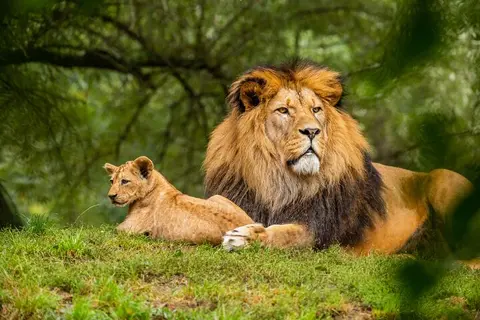
- WildlifeWhat Do Elephants Eat At The Zoo?By Charlotte Green
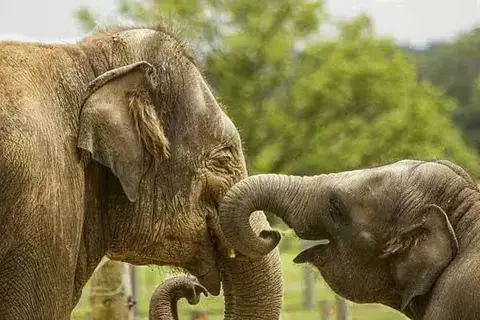
- Wildlife20 Fun Facts About KoalasBy Noah Young

- Cats25 Interesting Facts About CatsBy Amelia B
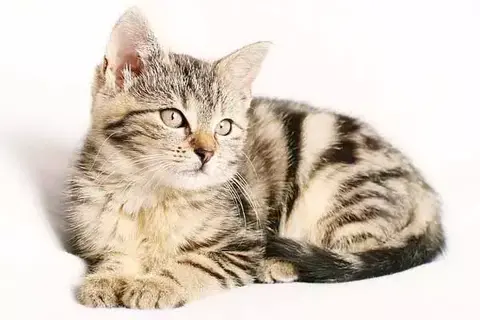
- RodentsHow Do Hedgehogs Sleep?By Camilo Walker
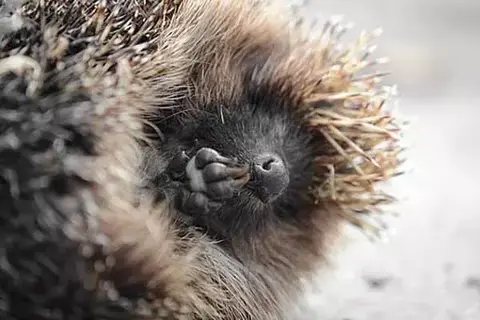
- CatsHow Much Cat Litter Should I Use?By Nolan Foster

- RodentsWhat Does A Squirrel’S Nest Look Like?By Nolan Foster
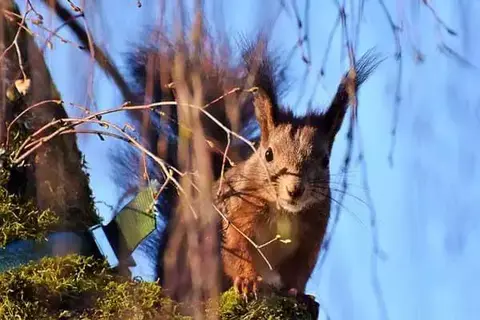
- Wildlife7 Interesting Facts About PumasBy Amelia B
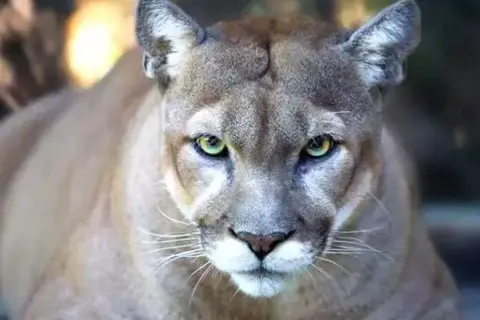
- Birds50 Interesting Facts About CockatooBy Khai Dove
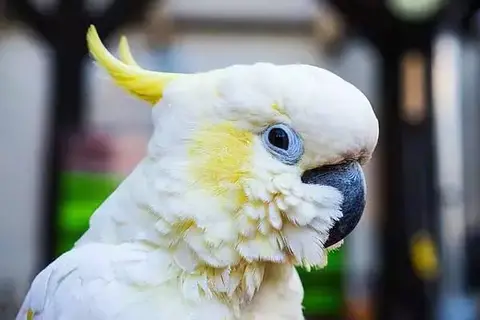
- Wildlife35 Interesting Facts About LionsBy Khai Dove
